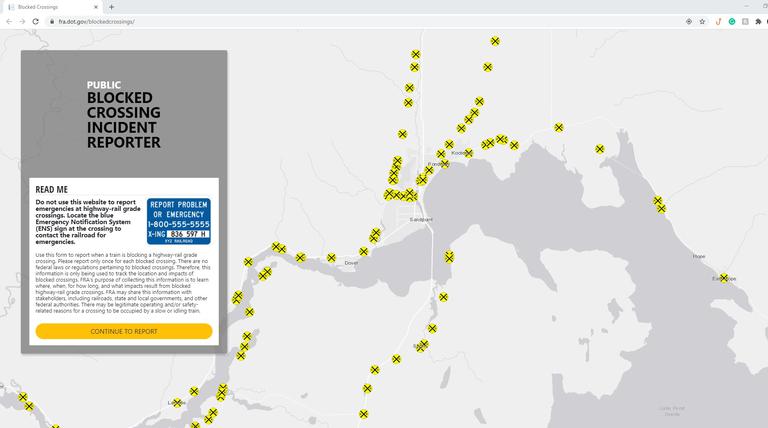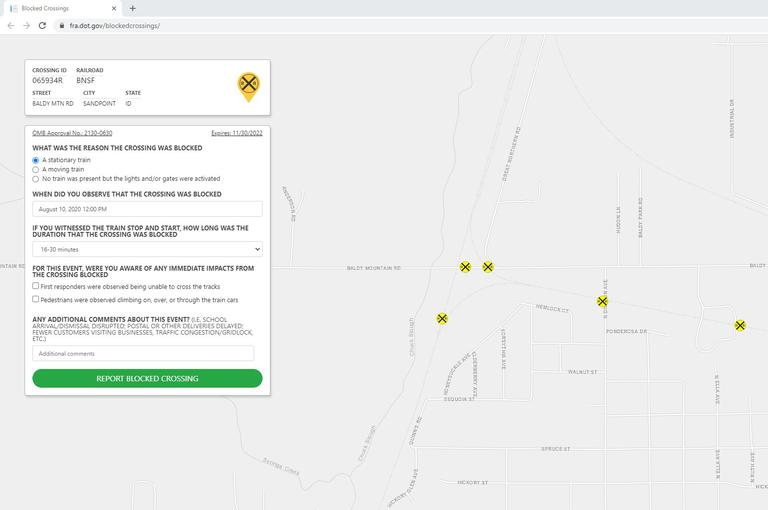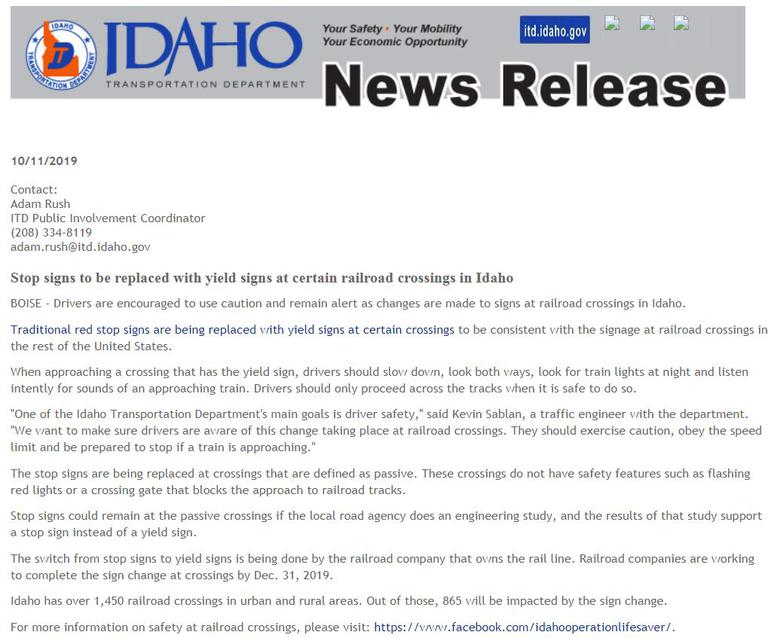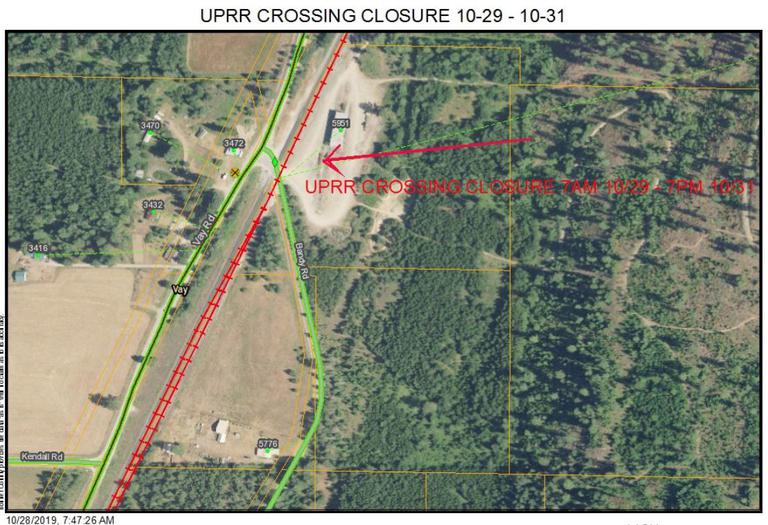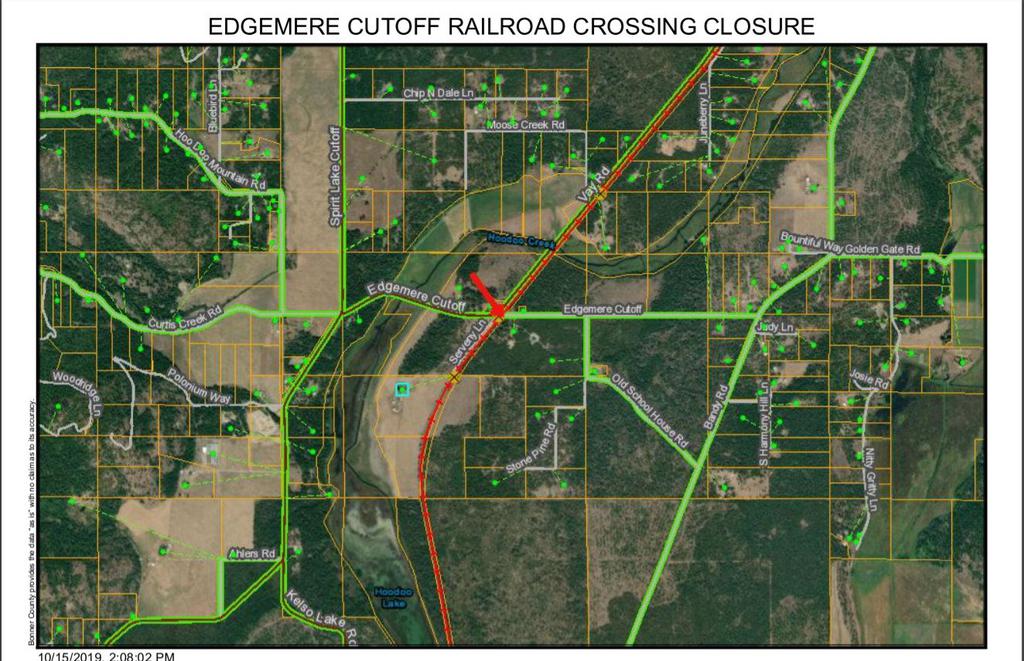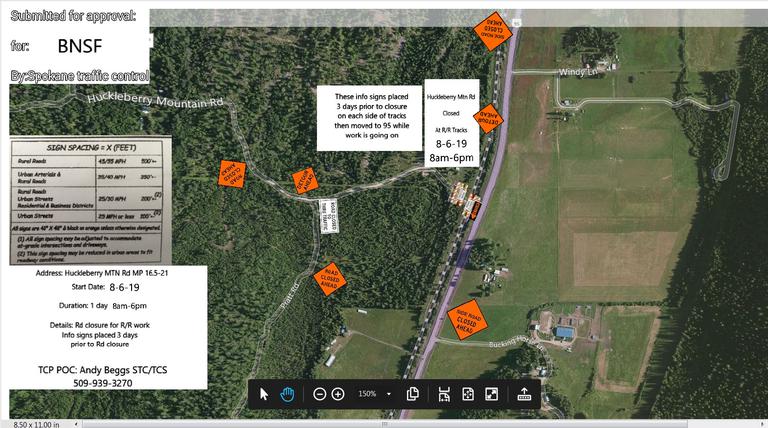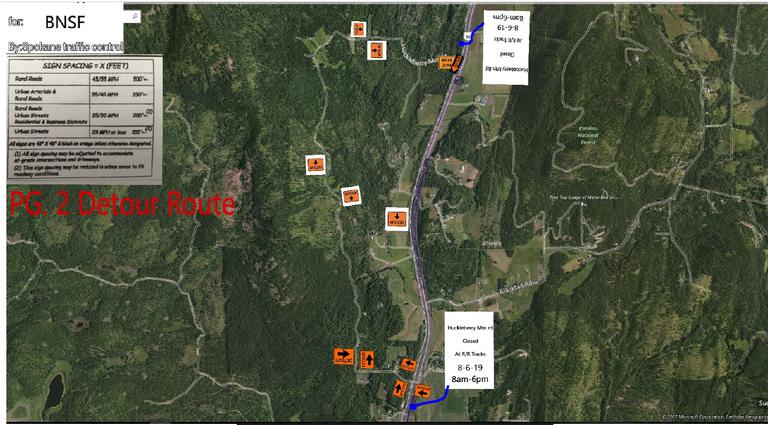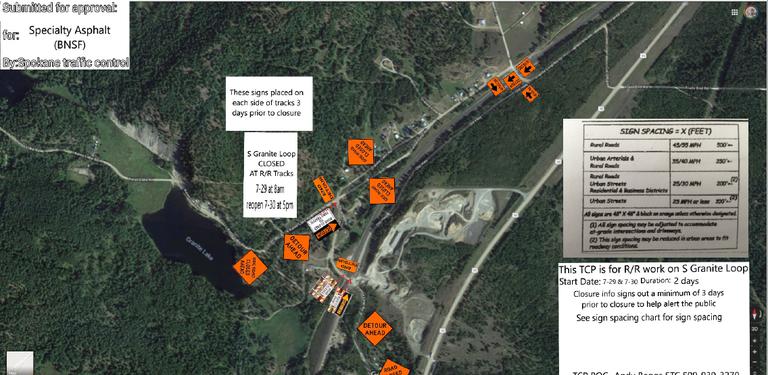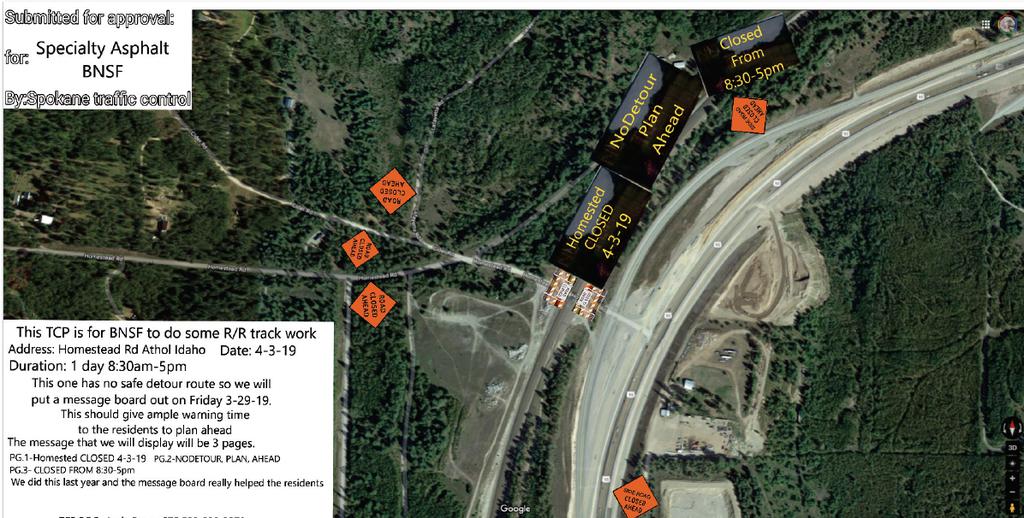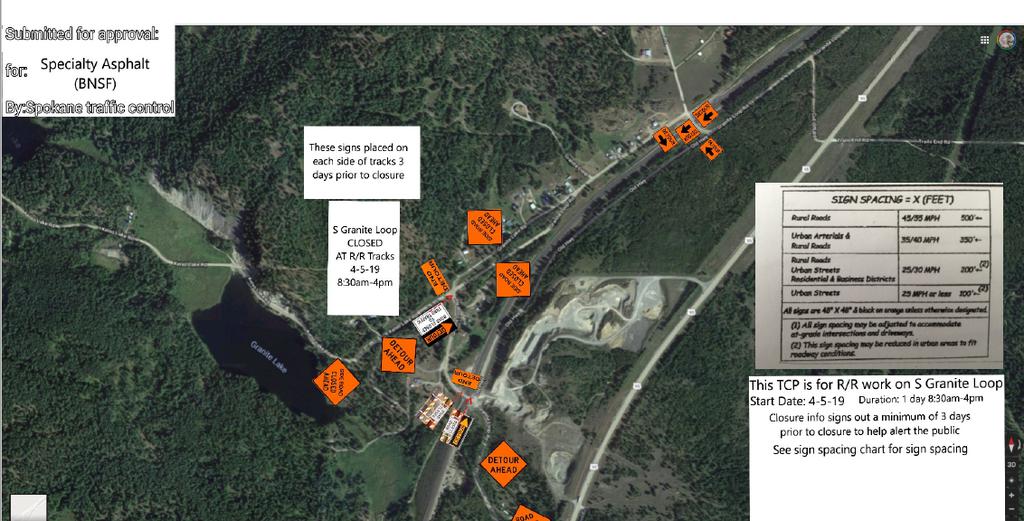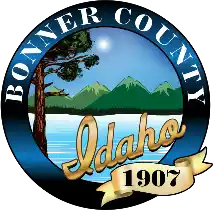Railroad Crossing Information
9.11.25
Union Pacific Railroad Closure on Forest Siding Rd 9/17/25:
.jpg)
.png)
Union Pacific will be closing Forest Siding Rd at the RR Crossing on Wednesday, September 17th from 6AM to 6PM.
Detours will be in place through S Center Valley Rd and Selle Rd.
Thank you.
9.11.25
Union Pacific Railroad Closure on Selle Rd 9/16/25:
.jpg)
.png)
Union Pacific will be closing Selle Rd at the RR Crossing between S Center Valley Rd and Forest Siding Rd on Tuesday, September 16th from 6AM to 6PM.
Detours will be in place through S Center Valley Rd and Forest Siding Rd.
Thank you.
9.4.25
Union Pacific Railroad Closure Mcghee Rd 9/5/25 6AM - 6PM:
.jpg)
Union Pacific will be closing the railroad crossing at Mcghee Rd on Friday, September 5th from 6AM - 6PM.
Thank you.
8.1.25
Union Pacific Railroad Closure Kelso Lake Rd 8/6/25:
.jpg)
.png)
Union Pacific will be closing the railroad crossing at Kelso Lake Rd on Wednesday, August 6th from 7:00am to 7:00pm. Detours will be in place through Clagstone Rd to Spirit Lake Cutoff.
Thank you.
6.24.25
Union Pacific Railroad Crossing Closures: Swan Shores Dr/Gypsy Bay Rd 6.24.25, Lakeshore Dr 6.26.25, Dufort Rd 6.27.25
Union Pacific will be closing the following railroad crossings on the dates specified. Each road will be closed on it's respective dates for a one day closure starting at 7:00 AM - 3:00 PM.
Swan Shores Dr/Gypsy Bay Rd RR Crossing Closure 6.24.25:
.png)
Lakeshore Dr RR Crossing Closure 6.26.25:
.png)
Dufort Rd RR Crossing Closure 6.27.25:
.png)
Thank you.
6.11.25
Union Pacific Railroad Crossing Closure 6.12.25 - Samuels Rd:

.png)
Union Pacific will be doing emergency repairs at the railroad crossing on Samuels Rd near Milk Creek Rd on Thursday, June 12th. Detours will be in place.
Thank you.
3.21.25
BNSF Railroad Crossing Closure - Bottle Bay Rd:
BNSF will be closing the RR crossing on Bottle Bay Rd on Sunday, March 23rd. There will be a detour route.
Thank you.
10.22.24
Cocolalla Loop N Entrance RR Closure 10.23.24
It was just brought to our attention that there will be a railroad closure at the N Entrance of Cocolalla Loop tomorrow (Wednesday, October, 23rd, 2024).
The railroad company said that they will close the road at the crossing after the school bus does its pick up route and will have it reopened before the drop off route takes place.
8.14.24
BNSF Railroad Crossing Closure:
BNSF is planning to close the Gooby Rd RR crossing 8/20/24 - 8/22/24. They will have detours in place.
Thank you.
7.10.24
Union Pacific Railroad Crossing Closure:
UPDATE: The crossing is now back open.
Union Pacific will be closing the railroad crossing at Kootenai Cutoff Rd by Highway 200 today (7/10/24) for a repair to the work they did earlier this year.
Thank you.
6.20.24
BNSF Railroad Crossing Closure:
BNSF announced their plans for the closure of Samuels Road at RR tracks. This will be a 2 day closure and take place June 25th at 7am thru June 26th 5pm.
Message boards will be set up Monday June 24th to alert the public of this closure.
6.13.24
BNSF Railroad Crossing Closure:
BNSF announced their plans for the closure of Sagle Rd at RR tracks. This will take place June 20th at 7am thru June 21st 5pm.
Message boards will be set up Monday June 17th to alert the public of this closure. Detour Route signage will be put up for motorists during the closure.
5.14.24
Railroad Crossing Closings from Union Pacific UPDATE:
.jpg)
Samuels Rd RR Crossing will be closed May 15th, 4am-10pm
Detour Route Signage will be put up for motorists during the closure.
UPDATE: Kootenai Rd RR Crossing will no longer be closed. Union Pacific gave incorrect information and Kootenai Cutoff Rd is the road they intend to close on Thursday, May 16th from 7am - 7pm.
For information regarding that closure please contact the City of Ponderay.
4.30.24
Railroad Crossing Closings from BNSF (UPDATE 4/30/24):
.jpg)
- Great Northern Rd. and Gooby Rd crossing will be closed from Monday (4/29) 7:30 am and reopen 5 pm on Wednesday (5/1)
- Sagle Rd will be closed Thursday (5/6) from 8 am to 5pm same day.
4.26.24
Railroad Crossing Closings from Union Pacific:
.jpg)
"Crossing at Clagstone Rd will be closed Tuesday, April 30 7AM - 5PM
Crossing at Kelso Lake Rd will be closed Wednesday, May 1 7AM - 5PM
Detour Route Signage will be put up for motorists during the closure."
Thank you.
UPDATE 8/17/2020 - BNSF will be closing the railroad crossing at the south end of Cocolalla Loop for repairs Thursday morning, Aug 20th at 7:30 am, then reopening on Friday, Aug 21st at 5 pm.
UPDATE 8/11/2020 - FOR EMERGENCY ISSUES FOR RAILROAD CROSSINGS - CALL THE RAILROAD COMPANY PHONE NUMBER ON THE BLUE SIGN POSTED TO THE RIGHT SIDE OF THE CROSSING. IT WILL HAVE THE CROSSING NUMBER POSTED ON THE SIGN. SEE EXAMPLE BELOW. THESE SIGNS ARE CROSSING SPECIFIC FOR PHONE NUMBER FOR THE SPECIFIC RAILROAD.
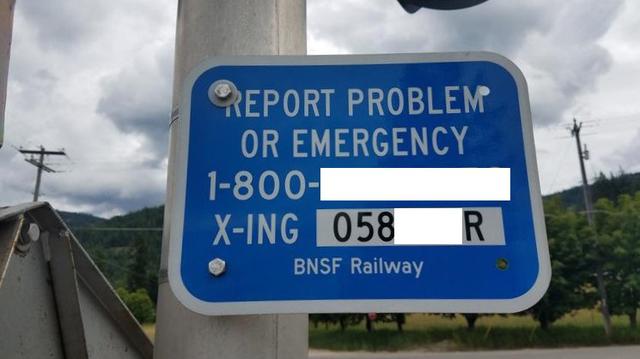
UPDATE 8/11/2020 BLOCKED RAILROAD CROSSINGS - NON EMERGENCY - WHERE TO REPORT THE DATA
Please click on the link below to report blocked railroad crossings (over 15 minutes).
It's a simple form to complete. Identify the crossing number on the sign or click the crossing location on the map, click General Public Report, 1.) answer if the train was stationary, moving or no train, but lights or crossing gate was activated, 2.) the date, 3.) duration crossing was blocked, and 4.) any immediate impacts. Please share this with as many people as necessary so we can accurately capture blocked crossing data. The Federal Railroad Administration will use this reporting function to track crossings that are blocked regularly and this will give them more data to pursue enforcement against railroads that are repeat offenders.
Note: The information needs to be reported within 7 days of the blocked crossing incident.
https://www.fra.dot.gov/blockedcrossings/
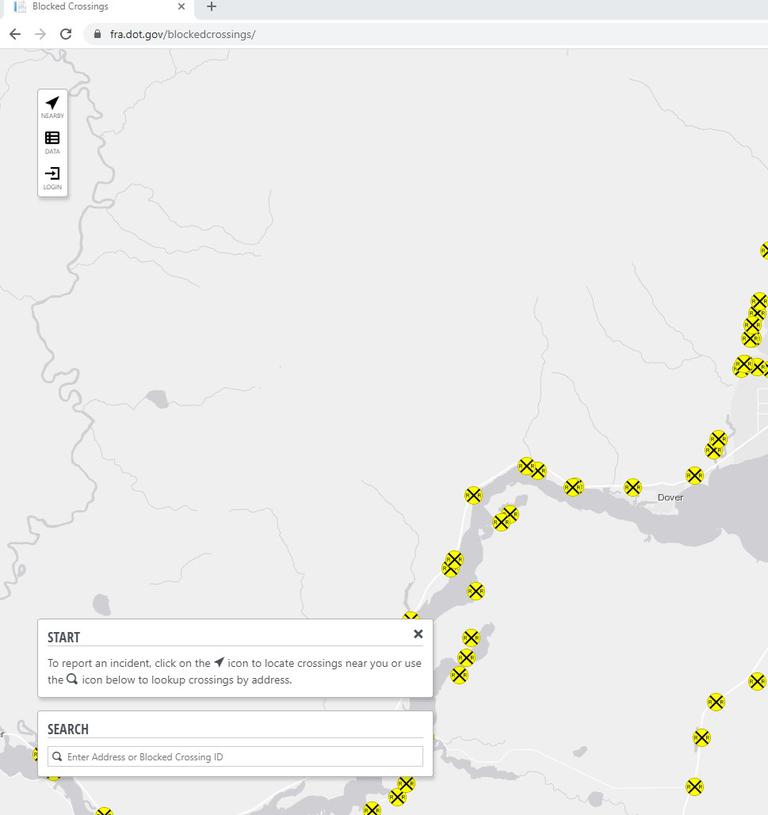
UPDATE 7/23/2020- BEGINNING AT 8:30 AM, MONDAY, JULY 27TH KOOTENAI BAY ROAD WILL BE LIMITED TO ONE LANE TRAFFIC FOR INSTALLATION OF MEDIAN / BOLLARDS TO DIRECT TRAFFIC FOR THE QUIET ZONE "NO TRAIN WHISTLE" FOR THE PONDER POINT - WHISKEY JACK ACCESS. FLAGGERS WILL BE ON SITE. EXPECT DELAYS.
Contractor to install a median and bollards in the at-grade railroad crossing, one of the final steps in attaining the Kootenai Bay Road "Quiet Zone" designation from the Federal Railroad Administration. This will be similar to the one in East Hope.
UPDATE 6/09/2020 - BNSF WILL BE CLOSING THE SAGLE ROAD RAILROAD CROSSING FOR TRACK MAINTENANCE ON MONDAY, JUNE 15TH FROM 8:30 AM - 5 PM. PLEASE USE ALTERNATE ROUTES.
UPDATE 6/02/2020- BNSF WILL BE CLOSING THE ALGOMA SPUR RAILROAD CROSSING FRIDAY, JUNE 5TH FROM 8:30 AM - 4 PM FOR TRACK MAINTENANCE
UPDATE 4/17/2020 - UPCOMING BNSF RAILROAD CROSSING CLOSURES FOR TRACK MAINTENANCE
W Oden Bay Rd - Wednesday, 4/22/2020 9 am - 2 pm - No other outlet - Please plan accordingly
Bottle Bay Rd - Thursday, 4/23/20250 8 am - 5 pm
Barnhart Rd - Tuesday, 4/28/2020 8 am - 5 pm
UPDATE 4/03/2020 - BNSF WILL BE CLOSING THE BOTTLE BAY RAILROAD CROSSING OVERNIGHT ON WEDNESDAY, APRIL 8TH AT 7:30 AM THRU THURSDAY APRIL 9TH AROUND 4 PM.
UPDATE 3/25/2020 - BNSF IS CLOSING THE BARNHART ROAD RAILROAD CROSSING AT 8:30 AM TODAY, 3/25/2020 THRU 3 PM TOMORROW, 3/26/2020 FOR TRACK MAINTENANCE.
UPDATE 3/24/2020 - BARNHART ROAD RAILROAD CROSSING CLOSURE CHANGE BY BNSF RAILROAD
BNSF will need to close the crossing overnight on Thursday as opposed to opening them up that afternoon. The crossing will be closed from 8:30 am Thursday through 3 pm on Friday for track maintenance.
Please make the necessary arrangements.
UPDATE 3/20/2020 - BNSF WILL BE CLOSING THE FOLLOWING RAILROAD CROSSINGS FOR TRACK MAINTENANCE
Bottle Bay Rd - Monday, 3-23-2020 - 8:30 am - 5 pm
Sportsman Access Rd - Wednesday, 3-25-2020 - 8:30 am - 5 pm
Barnhart Rd - Thursday, 3-26-2020 - 8:30 am -5 pm
N Granite Loop - Friday, 3-27-2020 - 8 am - 5 pm
Sportsman Access Rd - Tuesday 3-31-2020 - 8:30 am - 5 pm
UPDATE 3/19/2020 - BNSF will be closing the Bottle Bay Road railroad crossing for track maintenance on Monday, March 23rd from 8:30 to 4pm instead of Tuesday. As of now, they will not be closing it overnight.
UPDATE 3/16/2020 - BNSF WILL BE CLOSING THE FOLLOWING RAILROAD CROSSINGS FOR TRACK REPAIR.
Huckleberry Mountain Road - Tuesday, March 17th, 9am to 5pm and Wednesday, March 18th, 9 am to 3pm.
Bottle Bay Rd - Tuesday, March 24th from 8am overnight, reopening at approximately 4pm.
Please plan accordingly.
UPDATE 11/14/2019 -STOP SIGNS TO BE REPLACED WITH YIELD SIGNS AT CERTAIN RAILROAD CROSSINGS IN IDAHO
Residents may notice conflicting Stop Ahead, Stop and Yield signs at certain passive railroad crossings as the railroad companies are replacing signage within their right of way. The switch from stop signs to yield signs is being done by the railroad company that owns the rail line. Railroad companies are working to complete the sign change at crossings by Dec. 31, 2019. The Bonner County Road Department is removing the stop signs laying in the right of way along County maintained roads once the railroad contractors have installed the new Yield signs.
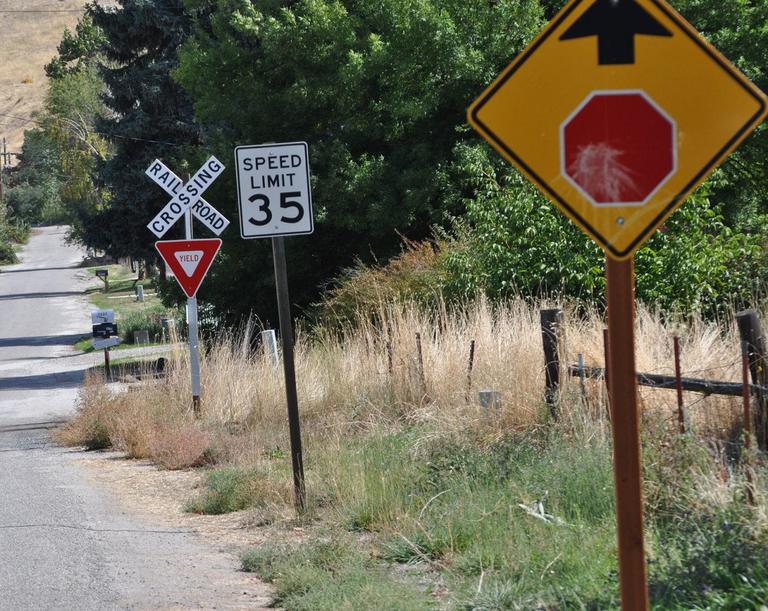
When approaching a crossing that has a yield sign, drivers should slow down, look both ways, look for train lights at night and listen intently for sounds of an approaching train and only proceed across the tracks when it's safe to do so. Drivers should exercise caution, obey the speed limit and be prepared to stop if a train is approaching.
UPDATE 10/28/2019 - UNION PACIFIC RAILROAD WILL BE CLOSING THE ROAD RAILROAD CROSSING AT THE NORTH END OF BANDY ROAD FROM TUESDAY, OCTOBER 29TH AT 7 AM UNTIL THURSDAY, OCTOBER 31ST AT 7 PM FOR REPAIRS.
UPDATE 10/15/2019 - UNION PACIFIC RAILROAD WILL BE CLOSING EDGEMERE CUTOFF RAILROAD CROSSING FOR REPAIRS FROM THURSDAY, OCTOBER 17TH AT 7 AM THROUGH FRIDAY, OCTOBER 18TH UNTIL 5 PM. SEE MAP LINK BELOW
EDGEMERE CTF RR CROSSING CLOSURE (1).pdf
UPDATE 10/09/2019 - BNSF RAILROAD WILL BE CLOSING HOMESTEAD ROAD RAILROAD CROSSING ON MONDAY, OCT 14TH FROM 10 AM - 3 PM FOR PAVING. PLEASE PLAN ACCORDINGLY.
UPDATE 10/08/2019 - EMERGENCY REPAIRS UNION PACIFIC RAILROAD CROSSING CLOSURES EXTENDED
DUE TO MUCH MORE EXTENSIVE WORK ON THE TRACKS, KELSO - CLAGSTONE CUTOFF RAILROAD CROSSING WILL BE CLOSED UNTIL APPROXIMATELY 5 PM TODAY.
KELSO LAKE ROAD RAILROAD CROSSING WILL BE CLOSED TUESDAY, OCT 15TH THROUGH THURSDAY, OCT 17TH. PLEASE PLAN ACCORDINGLY.
UPDATE 10/07/2019 - EMERGENCY RAILROAD CROSSING REPAIRS BY UNION PACIFIC RAILROAD
Kelso Clagstone Cutoff Rd at the tracks - Sat, Oct 5th from 3pm thru Mon, Oct 7th 4pm
8300 Blk of Kelso Lake Rd at the tracks - Mon, Oct 7th from 4pm thru Tue, Oct 8th 5pm
UPDATE 9/05/2019 UPCOMING BNSF RAILROAD CROSSING CLOSURE AT HOMESTEAD RD WEDNESDAY SEPTEMBER 11TH.
BNSF will be closing Homestead Rd at the RR tracks on Wednesday, Sept 11th from 8:30 am to 5 pm for repairs.
UPDATE 8/19/2019 - UPCOMING BNSF RAILROAD CROSSING CLOSURE AT NORTH END OF GRANITE LOOP
BNSF will be closing the NORTH end of Granite Loop at the railroad tracks starting Wed, Aug 21st at 8 am and reopening Thursday, Aug 22nd at approx 5 pm.
UPDATE 7/31/2019 - BNSF WILL BE CLOSING THE HUCKLEBERRY MOUNTAIN ROAD RAILROAD CROSSING FOR REPAIRS ON 8/06/2019 FROM 8 AM - 6 PM.
SEE DETOUR MAP LINKS BELOW.
TCP- Huckleberry mtn rd (BNSF) 8-6-19.pdf
TCP- Huckleberry mtn rd detour (BNSF) 8-6-19.pdf
UPDATE 7/24/2019 - BNSF HAS RESCHEDULED THE RAILROAD CROSSING CLOSURE AT THE SOUTH END OF GRANITE LOOP, AGAIN, TO THURSDAY, AUGUST 1ST AT 8 AM AND REOPENING THE FOLLOWING DAY, FRIDAY, AUGUST 2ND AT 5 PM.
UPDATE 7/22/2019 - UPCOMING BNSF CROSSING CLOSURE MONDAY JULY 29TH - 30TH
BNSF WILL BE CLOSING THE RAILROAD CROSSING AT THE SOUTH END OF GRANITE LOOP STARTING MONDAY, JULY 29TH AT 8 AM AND REOPENING THE FOLLOWING DAY, TUESDAY, JULY 30TH. AT 5 PM. SEE DETOUR MAP LINK BELOW:
TCP- S end of Granite Loop 7-29-7-30(BNSF) Closure.pdf
5/30/2019 - GRANITE LOOP RAILROAD CROSSING CLOSURE, SOUTH END UPDATE - BNSF ran into some mechanic issues today on the repair of the railroad tracks, therefore the railroad crossing at the south end of Granite Loop will be closed overnight until midday tomorrow. They apologize for the inconvenience.
UPDATE 5/28/2019 - BNSF WILL BE CLOSING THE RAILROAD CROSSING AT THE SOUTH END OF GRANITE LOOP THURSDAY, MAY 30TH FROM 8:30 AM TO 5:00 PM FOR REPAIRS. DETOUR SIGNS WILL BE POSTED.
UPDATE 5/03/2019 - COCOLALLA LOOP BNSF CROSSING WILL BE OPEN TODAY, BUT CLOSED WEDNESDAY, MAY 8TH FOR REPAIRS
BNSF will be closing the railroad crossing at the north end of Cocolalla Loop on Wednesday, May 8th from 7:30 am to 4 pm for railroad crossing repairs. Use south end of Cocolalla Loop detour.
UPDATE 5/02/2019 - COCOLALLA LOOP, NORTH END BNSF RAILROAD CROSSING CLOSED FOR REPAIRS
BNSF has closed the railroad crossing on the north end of Cocolalla Loop for today, tomorrow ( May 3rd) and Wed, May 8th from 7:30 am to 4 pm for railroad crossing repairs. Use south end of Cocolalla Loop detour.
UPDATE 4/03/2019 - HOMESTEAD RD RAILROAD CROSSING CLOSURE BY BNSF HAS BEEN RESCHEDULED FOR MONDAY, APRIL 8TH. PLEASE PLAN ACCORDINGLY
UPDATE 3/27/2019 - UPCOMING BNSF RAILROAD CROSSING MAINTENANCE CLOSURES
Homestead Road on 4-03-19 from 8:30 am -5 pm - No safe detour route, so public will need to plan ahead.
S Granite Loop on 4-05-19 from 8:30 am- 4 pm - Detour will be out the north end of Granite Loop.
7/02/2018 UPDATE -
UPCOMING BNSF RAILROAD CROSSING CLOSURES
Samuels Rd Tuesday, 7/03/18 to Friday, 7/06/18 8 am - 8 pm
Huckleberry Mtn Rd Wednesday, 7/04/18 to Friday, 7/06/18 from 8 am - 8 pm
N Granite Loop on Friday 7/06/18 from 8 am - 8 pm
6/27/2018 UPDATE - BOTTLE BAY RD - TRAINS BLOCKING RAILROAD CROSSING IN EXCESS OF 20 MINUTES
BURLINGTON NORTHERN SANTA FE RAILROAD
The number to call if a train is blocking the Bottle Bay Rd railroad crossing #058828R in excess of 20 minutes is 800-832-5452 BNSF DISPATCH
RAILROAD CROSSINGS IN BONNER COUNTY
"SEE TRACKS, THINK TRAIN"
According to Federal Railroad Administration Office of Safety Analysis, there are 149 open railroad crossings in Bonner County of which 85 are public and 64 are private.
One constant is sure in any type of train collision: The train wins. Motorists and pedestrians often lose at the cost of their lives. With 148 railroad crossings in Bonner County and freight traffic projected to possibly double in this corridor, the threat is ever-present.
About every 3 hours, a person or vehicle is hit by a train.

Operation Lifesaver is working to change people's behavior around railroad tracks and crossings with the national public awareness campaign SEE TRACKS? THINK TRAIN! link http://www.seetracksthinktrain.org/
Since Operation Lifesaver, a nationwide public information program, was introduced in 1972, train/motor vehicle collisions have declined 83 percent. Still, a person or a vehicle is hit by a train about every three hours, according to the organization’s website, www.oli.org.
Motorists are 20 times more likely to die in a crash with a train than a crash with a vehicle . The weight ratio is 4,000-to-1 . A train engineer can do little else than blow a whistle – an average freight train traveling 55 mph takes a mile to come to a stop. To put that into perspective, a freight train's stopping distiance is nearly the length of 18 football fields . As trains are ever-present around Bonner County, motorists must heed the danger. Operation Lifesaver's slogan says, “See tracks. Think train.” Look up OPERATION LIFE SAVER at www.oli.org for safety tips and more information.

HEATH LAKE RD RAILROAD CROSSING AT HIGHWAY 95 IN SAGLE MAY BE CLOSED BY ITD AND BURLINGTON NORTHERN RAILROAD WITHIN THE NEXT YEAR
More information about Bonner County railroad crossings with incidents or accidents can be found at this Federal Railroad Administration Office of Safety Analysis link: http://safetydata.fra.dot.gov/OfficeofSafety/publicsite/crossing/XingLocResults.aspx?state=16&countycity=017%2c&railroad=&reportinglevel=ALL&radionm=County&street=&xingtype=%25&xingstatus=1&xingpos=%25
The lights and crossing arms placed at crossings cost approximately $250,000 each. Only 19 crossings in Bonner County are currently controlled with crossing arms. The ITD statewide budget is only $2.5 million for rail safety each fiscal year, or about $500,000 per district.
CENTENNIAL BLVD RAILROAD CROSSING IN HOPE
RAILROAD CROSSING SAFETY TIPS
Many drivers pay little or no attention at highway-rail crossings they drive across day after day because they never see a train there. The following safety tips can help save a life.
Trains do not run on set schedules. They can be on any track, at any time, going in either direction
When locomotive engineers see a vehicle or person on the tracks in the path of their train, they can only sound the warning horn and apply the emergency brakes. A train in emergency braking will stop, but not in time to avoid this collision. The average freight train consisting of 100 cars and weighing anywhere from 12 million to 20 million pounds takes over a mile to stop in emergency braking. There are brakes on every wheel, but it takes that long for all of those brakes to overcome the momentum of the tremendous weight pushing the train.
Always yield the right of way to the train. The train cannot yield to you.
More than half of all motor vehicle-train collisions occur at crossings equipped with the automatic signals. It's because some drivers choose to drive around the gates or through the flashing red lights because they believe they can beat the train, or they assume a stopped train has activated the signals or the signals are malfunctioning.
Never ignore active warnings at crossings.
Locomotives are huge;17 feet high and 10 feet wide. As a result, they appear to be traveling much slower than we think when viewed from a slight angle at the crossing. The combination of the size and angle create this illusion. The parallel lines of the rails converging toward the horizon contribute to the illusion and fool our minds into thinking the train is farther away than it actually is. It is virtually impossible to accurately judge the speed of a train when these combinations of illusions are present.
Trains will arrive at a crossing faster than you anticipate.
One in four crashes occurring at highway-rail crossings takes place when vehicles run into the side of the train. Often, it's because the vehicle is traveling too fast for conditions, such as darkness, rainy weather or fog. Many drivers "overdrive their headlights." This means driving too fast to be able to stop in the distance illuminated by your headlights. By the time drivers see the train at the crossing, it's too late to avoid the crash. In other instances, there may be high levels of noise in the vehicle, which distracts the driver from noticing the train's warning devices.
Look and listen when you see advance warning signs indicating a rail-highway crossing.
Drivers who pass vehicles when approaching a highway-rail crossing run the risk of a collision at the crossing. The vehicle being passed may obstruct a clear view of the tracks, or vehicle speed while passing may be too great to stop in time.
Don’t get trapped on railroad crossings.
Many vehicles get trapped on the crossing, between other vehicles, and end up getting hit by a train or are abandoned by drivers just before they're destroyed.
Before starting across the tracks, be sure there's room to get completely across.
Many crossings are on a surface higher than the roadway. Shifting gears with a manual transmission while going across this raised surface may cause the vehicle to stall on the tracks. If your vehicle is ever stalled or trapped on the tracks and a train is approaching, quickly get yourself and all other passengers out! Don't try to take any other items with you. When the train strikes the vehicle it will send flying metal and glass ahead of and outward from the locomotive. Many people have been seriously injured and even killed because they ran the wrong direction.
When running away from a vehicle stuck on tracks, run away from the tracks at an angle in the direction of the approaching train.
If a train is not approaching when a vehicle is stuck on the tracks, be sure to get yourself and all other passengers out of the vehicle and to a safe location. At crossings there are signs with a toll-free number to call the railroad directly and warn them of stalled vehicles or other problems at the crossing.

When crossing has more than one track, don't try to cross immediately after the end of the train passes -- there may be another train approaching on the second track.
Many crossing crashes have resulted because of impatience or inattentiveness at multiple-track crossings. You will always know how many tracks are at the crossing by observing a sign posed under the crossbuck. Directly below the crossbuck is a sign that indicates the number of tracks present if there are multiple tracks at the crossing.
Stay off railroad property and stay safe.
Some people believe railroad tracks are public property. Railroad tracks, railroad service roads, and other railroad right of way are often used by joggers, hikers, people walking their pets, or as a pathway to ride motorcycles or other all-terrain vehicles or a wide variety of other activities. The danger with these activities on or near railroad tracks is these people are concentrating on their own activities not a train! Many joggers wear headphones and cannot hear a train warning horn. Motorized vehicle noise also drowns out the locomotive horn. Many people who do not hear the warning fail to escape the danger. More importantly, railroad tracks, service roads, and right of way are private property and only persons authorized by the railroads can be on that property.

.jpg)
.jpg)
.jpg)
.jpg)
.jpg)
.jpg)
